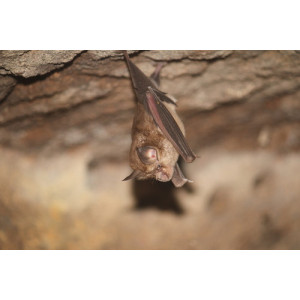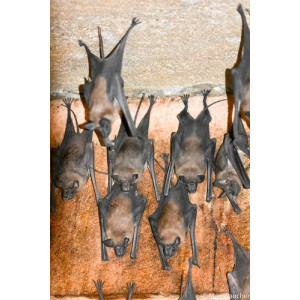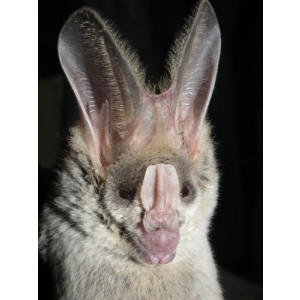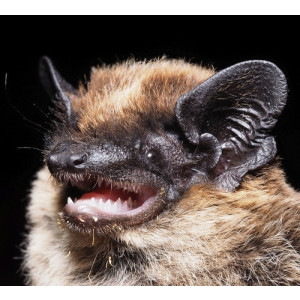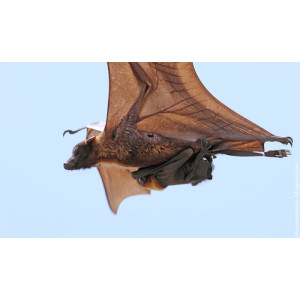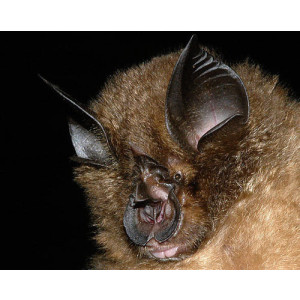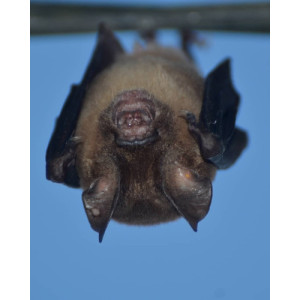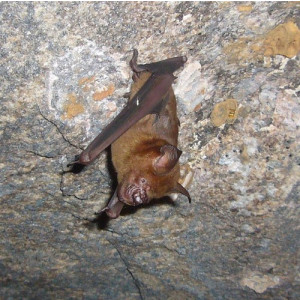@Juan Cruzado Cortés

Kelaart’s Pipistrelle Did you see this animal?
Scientific Name : Pipistrellus ceylonicus
Family : Vespertilionidae
Order : Chiroptera
Class : Mammalia
Phylum : Chordata
Habitat : Forest, Caves and Subterranean Habitats (non-aquatic)
Description : Kelaart’s Pipistrelle is a small bat, with an average body length of 3.5 to 4.5 cm, and a wingspan of 19 to 22 cm. The fur on their back and upper parts is brownish-gray, while their underside is a lighter shade of gray. They have large ears with rounded tips and a narrow, pointed muzzle.
The species is found in a variety of habitats including rainforests, wetlands, and grasslands. They are generally found in lowland areas, but can be found at elevations up to 1200 meters.
It feeds on small insects, such as mosquitoes, moths, and flies. They are aerial foragers, catching their prey in flight using echolocation.
Like most bat species, it is nocturnal, roosting during the day in caves, hollow trees, and buildings. They are highly social and roost in groups of up to 50 individuals. During the breeding season, males will establish territories and defend them against other males.
Breeding occurs from March to May, with females giving birth to a single pup per year. The gestation period is around 50-60 days, and the pups are weaned at around 4 weeks of age.
Like all bats, it uses echolocation to navigate and locate prey. They emit high-frequency calls and listen for the echoes that bounce back to them, allowing them to create a mental map of their surroundings.
The species is currently listed as "Least Concern" by the International Union for Conservation of Nature (IUCN). However, they may be threatened by habitat loss due to deforestation and human development. Additionally, they may be at risk of contracting diseases such as white-nose syndrome, which has devastated bat populations in other parts of the world.
The species is found in a variety of habitats including rainforests, wetlands, and grasslands. They are generally found in lowland areas, but can be found at elevations up to 1200 meters.
It feeds on small insects, such as mosquitoes, moths, and flies. They are aerial foragers, catching their prey in flight using echolocation.
Like most bat species, it is nocturnal, roosting during the day in caves, hollow trees, and buildings. They are highly social and roost in groups of up to 50 individuals. During the breeding season, males will establish territories and defend them against other males.
Breeding occurs from March to May, with females giving birth to a single pup per year. The gestation period is around 50-60 days, and the pups are weaned at around 4 weeks of age.
Like all bats, it uses echolocation to navigate and locate prey. They emit high-frequency calls and listen for the echoes that bounce back to them, allowing them to create a mental map of their surroundings.
The species is currently listed as "Least Concern" by the International Union for Conservation of Nature (IUCN). However, they may be threatened by habitat loss due to deforestation and human development. Additionally, they may be at risk of contracting diseases such as white-nose syndrome, which has devastated bat populations in other parts of the world.
Distribution in Bangladesh
References:
description written by: Asad U. Tanvir, Department of Zoology, Jagannath University, Dhaka; reviewed by: Muntasir Akash, Department of Zoology, University of Dhaka; Taxonomic Checklist: Red List of Bangladesh Volume 2: Mammals, 2015, IUCN; information sources: Wikipedia , iucnredlist.org; photo credit: Juan Cruzado Cortés(www.inaturalist.org/people/juancruzado), photo copyright: iNaturalist. For more information please contact with us.
description written by: Asad U. Tanvir, Department of Zoology, Jagannath University, Dhaka; reviewed by: Muntasir Akash, Department of Zoology, University of Dhaka; Taxonomic Checklist: Red List of Bangladesh Volume 2: Mammals, 2015, IUCN; information sources: Wikipedia , iucnredlist.org; photo credit: Juan Cruzado Cortés(www.inaturalist.org/people/juancruzado), photo copyright: iNaturalist. For more information please contact with us.
